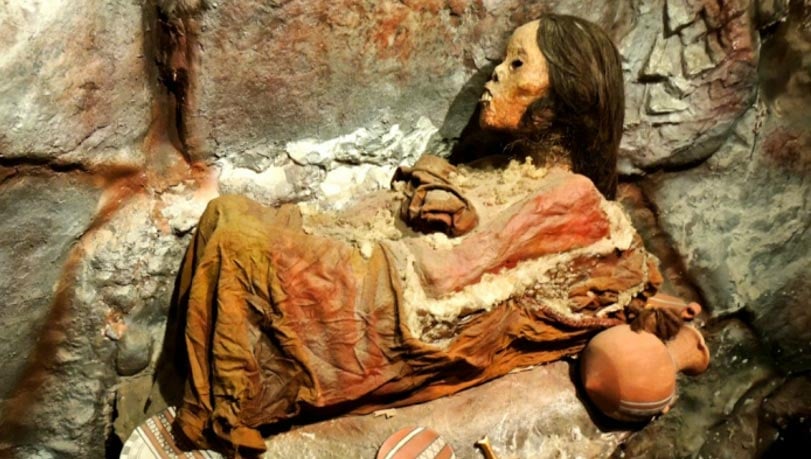Researchers Are Surprised by Antibiotic-Resistant Genes in an Ancient Peruvian Mummy
Scientists were shocked by the contents of a mummy found at the ancient site of Cusco in Peru. The colon of a Pre-Columbian mummy has been found to contain genes associated with antibiotic resistance. Before the invention of current medical antibiotics, these gene changes happened spontaneously.

Some of the mummies were collected in 1865-68, during a trip around the world aboard the Magenta Pirocorvetta
An international group of specialists examined the 11th-century mummy that was found in Cusco, the former Inca capital. According to Discovery News, their study focused on examining the microbiome of the remains that were preserved by nature in the chilly, arid climate of the Andes Mountains.
The mummy, identified as a woman who was between 18 and 23 years old at the time of her death, had been brought to Italy in the late 19 th century, where it was donated to a museum and housed with 11 other mummies.
An autopsy revealed the young woman’s preserved heart, esophagus and colon were enlarged, indicating she may have suffered from chronic Chagas’ disease, a dangerous parasite spread through bloodsucking insects called Triatominae, or ‘kissing bugs’. This parasite still plagues six to seven million people worldwide today.

The ancient mummy [right] was a woman who died in the 11 th century in Peru. Her gut revealed antibiotic-resistant genes. Altogether 11 such preserved mummies were in the museum collection.
She also had advanced heart disease, megacolon, and megaesophagus, but Chagas illness was what likely caused her death, according to DNA analysis of the mummy’s colon and excrement. According to Discovery News, scientists think she was probably treated with early medications like coca leaves. Future toxicology test results on a braid of her hair could provide more information about any medications or psychotropic substances she may have consumed.
Further analysis revealed another bacterial disease— Clostridium difficile (the origin of the C. difficile infection which causes diarrhea and colitis), and also some types of human papilloma virus (HPV).
The ancient woman’s remains contained numerous antibiotic-resistant genes that would have rendered therapy with current drugs futile. It is believed that these gene alterations “occurred naturally in bacteria that are 1,000 years old and are not necessarily linked to the abuse of antibiotics.”

The scientific journal PLOS One recently released research findings.
Basket mummies were prepared by treating them with smoke and then wrapping them and placing them in baskets. The baskets, which allowed the face to be seen, would be hung in family tombs. The arid, cold mountain climate naturally preserved the remains.
According to study co-author and University of Pisa professor of paleopathology and history of medicine Gino Fornaciari, “The mummy lay in a basket constructed of fibers that included two curtains enveloping the body completely. The only parts of the hands and skeletonized head that were visible.
The preparation of the mummy followed traditional traditions. A common technique during that time was to place bodies in the fetal position, wrap them in blankets, tie them up with cords, and then place them in baskets with handles to hang in tombs. Other techniques involved smoke-preserving mummies, similar to the Philippine Kabayan Fire mummies.

Antibiotic resistance today is a great concern. Researchers are sounding alarms for the need to reduce antibiotic use, for we soon may face a world where the patients are resistant to the medicines, described as a “silent tsunami facing modern medicine” by The Guardian this year.

While experts call for reduced antibiotic use, they’re also looking for sources of new antibiotics that we have not yet developed resistances to. It is hoped that identification of antibiotic resistance genes in ancient humans, such as found in the 11 th century Peruvian mummy, may give an understanding of diseases and treatments, and help in this search.





